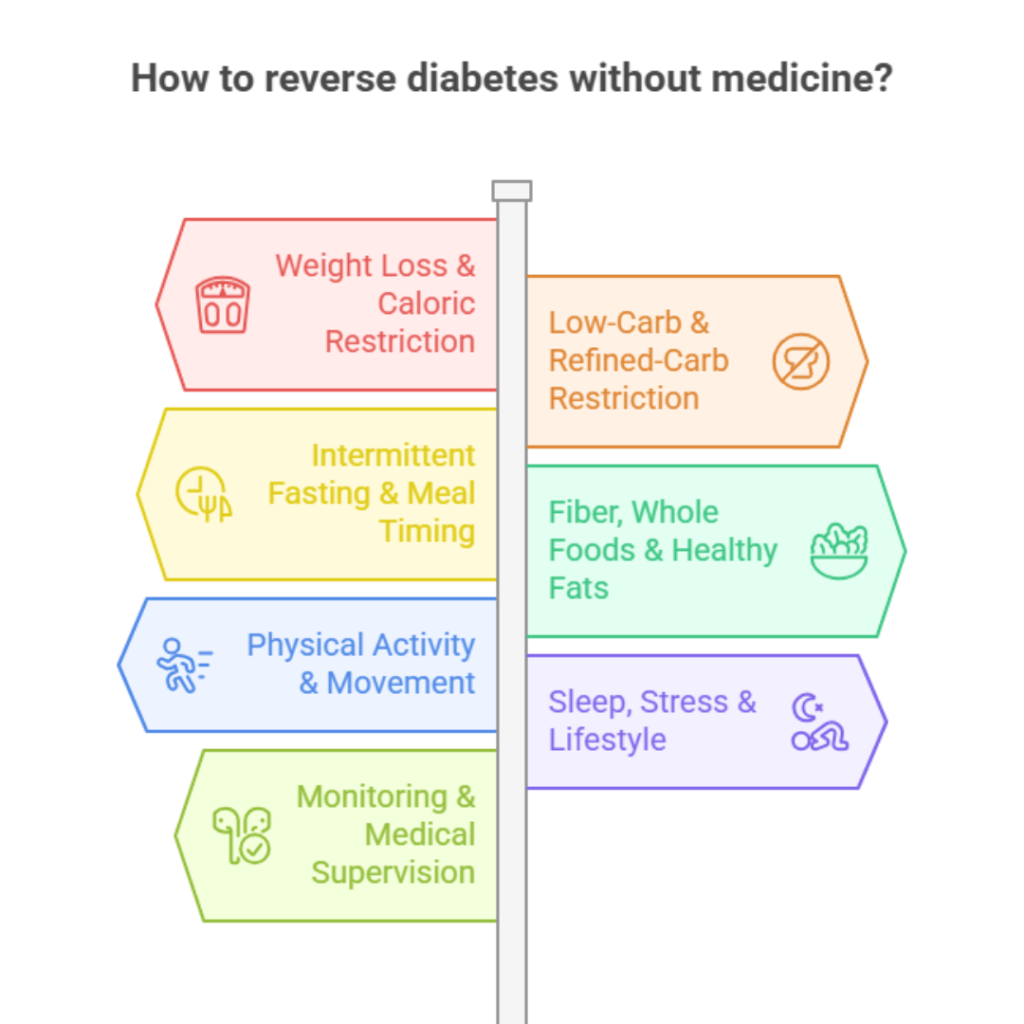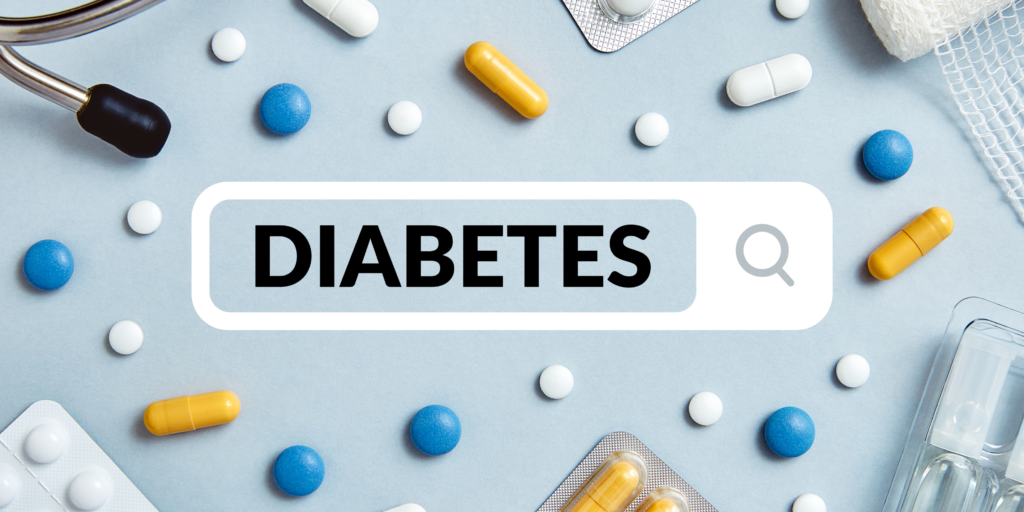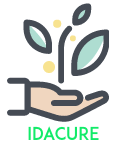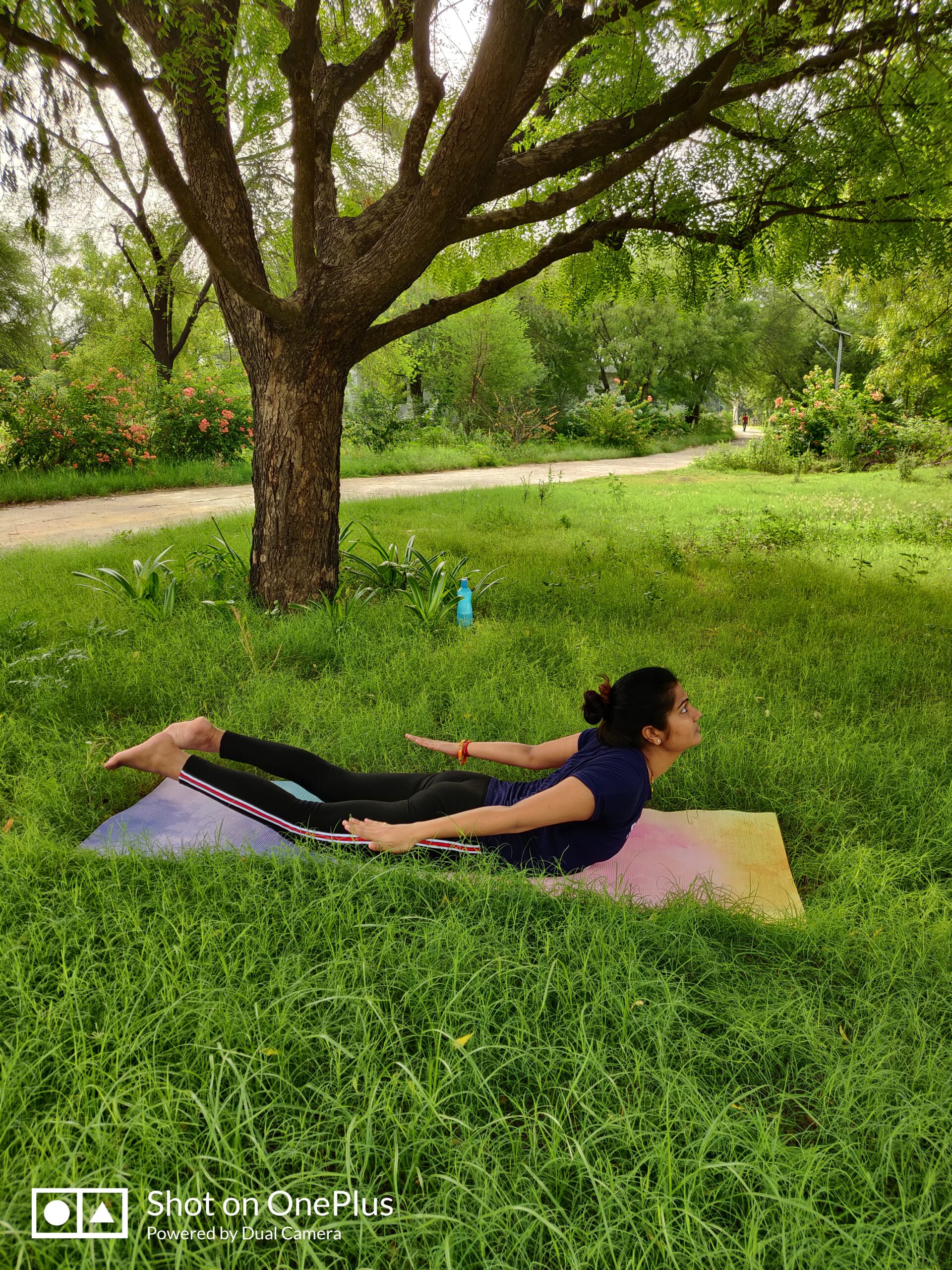The American Diabetes Association defines remission as keeping HbA1c values below 6.5% for a minimum of three months without using any drugs that decrease blood sugar. It doesn’t mean the disease is gone, but it is under control—naturally.
Many people are now asking, how to reverse diabetes through lifestyle changes alone. The answer lies in a combination of diet, exercise, and medical supervision.
What makes this approach so appealing is that it empowers individuals—especially those in the early stages—to take back control without lifelong dependency on pills or insulin injections.
Dr. Neha Patel, a specialist at IDA Cure, emphasizes that early intervention is key. “If you’ve been recently diagnosed or are in the early stages, your chances of reversing diabetes are much higher. The body is more responsive to change,” she explains.
Research shows that with sustained weight loss of 10–15% and consistent lifestyle modification, up to 46% of individuals with type 2 diabetes can achieve remission.
This gives hope to millions globally, especially those overwhelmed at the start of their diagnosis.
So if you’re wondering how to reverse diabetes without medicine, the journey begins with understanding that remission is possible—and within reach for many.
Read More : Food as Medicine: Addressing Autoimmune Conditions Through Dietary Change
Understanding Diabetes and Remission
To understand how to reverse diabetes, it’s important to first understand what happens inside the body during type 2 diabetes.
In type 2 diabetes, the body becomes insulin resistant, meaning cells no longer respond effectively to insulin—the hormone responsible for regulating blood sugar.
As a result, glucose builds up in the bloodstream. Over time, this also leads to beta-cell dysfunction in the pancreas, reducing the body’s ability to produce insulin altogether.
Dr. Neha Patel from IDA Cure explains, “It’s like a two-fold problem: your body resists the insulin you have, and then struggles to make more. This combination is what drives blood sugar levels higher over time.”
However, there is hope. The medical community now recognizes that type 2 diabetes is not always a lifelong sentence. Instead of talking about a “cure,” experts refer to remission.
According to global medical guidelines, remission means maintaining an HbA1c level below 6.5% for at least three months without the use of any diabetes medications.
This is the scientific benchmark behind the concept of how to reverse diabetes naturally. By addressing the root causes—such as excess weight, poor diet, and inactivity—many people have been able to achieve and sustain remission.
It’s not about magic pills—it’s about understanding the biology and taking evidence-based steps to change it.
Read More : Need a Trusted Naturopathy Centre Near Me?
Key Principles: How to Reverse Diabetes Without Medicine

When it comes to how to reverse diabetes, success lies in consistently applying science-backed lifestyle changes. Below are seven key principles that have helped thousands—under expert guidance—achieve remission, especially in the early stages of type 2 diabetes.
1. Weight Loss & Caloric Restriction
Even a modest weight loss of 3–5% of total body weight has shown significant improvements in insulin sensitivity. However, research shows that losing 10–15 kg can lead to remission in nearly half of the cases.
In one groundbreaking UK study, patients who followed a low-calorie liquid diet saw 46% remission rates after 12 months.
Dr. Neha Patel of IDA Cure explains, “Weight around the liver and pancreas impairs insulin action. When this fat is reduced, insulin sensitivity improves dramatically, opening the door to remission.”
2. Low-Carbohydrate & Refined-Carb Restriction
One of the core strategies in how to reverse diabetes is reducing refined carbohydrates—such as white bread, rice, sugary drinks, and pasta.
Low-carb diets not only improve insulin sensitivity but also reduce demand on the beta-cells, giving them a chance to recover.
Clinical studies confirm that individuals on a low-carb diet can achieve greater blood sugar control and even reduce or eliminate the need for medication over time.
3. Intermittent Fasting & Meal Timing
Time-restricted eating, such as intermittent fasting (16/8 method), helps lower liver fat and reduces post-meal glucose spikes.
Spacing out meals and walking for 10–15 minutes after eating has been shown to significantly regulate blood sugar levels.
IDA Cure recommends starting gently—perhaps with a 12-hour overnight fast—before progressing to longer windows, always under medical supervision.
4. Fiber, Whole Foods & Healthy Fats
Focusing on soluble fiber from legumes, vegetables, and whole grains helps slow glucose absorption and supports gut health.
Replacing refined carbs with healthy fats—like olive oil, avocados, and nuts—is a smart move, not a dangerous one.
Many patients at IDA Cure, under Dr. Patel’s care, have successfully transitioned to balanced whole-food diets and reported not just lower sugar levels, but better energy and mood.
5. Physical Activity & Movement
Moving your body is essential if you’re serious about learning how to reverse diabetes.
The goal: at least 150 minutes per week of moderate aerobic activity (like brisk walking or cycling), combined with resistance training (like light weights or bodyweight exercises).
Equally important is frequent light movement throughout the day, especially walking after meals, which significantly reduces blood sugar spikes.
6. Sleep, Stress & Lifestyle
Chronic sleep deprivation is linked to increased insulin resistance. Prioritize 7–8 hours of quality sleep every night.
Managing stress through yoga, breathing techniques, or mindfulness lowers cortisol levels, which can otherwise spike blood sugar.
Dr. Neha Patel also advises patients to quit smoking and moderate alcohol intake, both of which interfere with blood sugar control and overall health.
7. Monitoring & Medical Supervision
Reversing diabetes doesn’t mean going it alone. Regular blood glucose and HbA1c monitoring are crucial to track progress.
As your body improves, medications may need to be reduced—but only under a doctor’s guidance.
At IDA Cure, Dr. Patel works closely with patients to adjust medications based on their progress, ensuring safety while supporting their reversal journey.
By combining these seven pillars, many individuals are learning how to reverse diabetes naturally and regain control of their health. The journey isn’t always easy, but with guidance and consistency, it’s entirely possible.
Read More : Which Is the Best Naturopathy Clinic in Lucknow? Here’s a Complete Guide
Sample 90-Day Plan: How to Reverse Diabetes Without Medicine

Reversing diabetes isn’t an overnight fix—it’s a process. With consistent lifestyle changes, many individuals, especially those recently diagnosed, can begin to see results in just 90 days.
Here’s a simplified, evidence-backed roadmap to help you understand how to reverse diabetes—step by step.
Weeks 1–4: Foundation Phase
Start a low-carb, whole-food diet: Eliminate refined sugars and processed carbs. Focus on vegetables, proteins, healthy fats, and high-fiber foods like lentils and oats.
Add daily walking (30 minutes): A brisk walk after meals helps stabilize blood sugar levels.
Increase fiber intake: Include soluble fiber through chia seeds, legumes, leafy greens, and whole grains.
Dr. Neha Patel at IDA Cure says, “This first month sets the tone. Most patients already see a 10–15% drop in fasting blood glucose during this phase.”
Weeks 5–8: Acceleration Phase
Introduce intermittent fasting (e.g. 16:8): Time-restricted eating can reduce insulin levels and promote fat burning, especially around the liver.
Begin strength training 2–3 times/week: Resistance exercises improve insulin sensitivity.
Improve sleep hygiene: Aim for 7–8 hours of restful sleep. Avoid screens before bed and stick to a routine.
Studies show that these changes not only enhance weight loss but can help restore some beta-cell function—a key step in the process of how to reverse diabetes.
Weeks 9–12: Optimization Phase
Fine-tune your carb intake: Identify foods that spike your sugar and replace them with low-glycemic options.
Maintain weight loss goals: Sustaining even a 10% reduction can lead to long-term remission.
Practice stress management: Yoga, deep breathing, or nature walks help reduce cortisol and improve blood sugar control.
Track progress: Check your HbA1c and fasting glucose with professional support.
Dr. Patel and her team at IDA Cure recommend bi-weekly check-ins during this phase to safely reduce medications if needed and track remission markers.
This 90-day plan is not a rigid formula but a proven path many have followed to discover how to reverse diabetes naturally. With guidance, discipline, and encouragement, it’s more achievable than ever—especially when supported by a dedicated health professional like Dr. Neha Patel.
Read More : Dr. Neha Patel’s Wellness & Naturopathy Centre, Lucknow
Long-Term Maintenance: Preventing Reversion
Achieving remission is a major milestone—but maintaining it is just as critical. Studies show that approximately 37% of individuals who achieve remission from type 2 diabetes eventually resume medication within 3 years, often due to returning to old habits or weight regain.
So, after learning how to reverse diabetes, the next goal is to sustain those gains for life.
Dr. Neha Patel from IDA Cure emphasizes that remission isn’t the finish line—it’s a new beginning. “Maintaining remission requires commitment, routine, and regular check-ins. The great news is that once habits are in place, it becomes easier.”
Tips for Long-Term Success
- Sustain healthy eating habits: Stick to a balanced, low-carb, whole-food diet. Occasional flexibility is fine, but routine matters more than perfection.
- Continue weight monitoring: Regularly track your weight. Even small increases (2–3 kg) can raise relapse risk.
- Stay active consistently: Maintain 150+ minutes/week of physical activity, combining walking, cardio, and resistance training.
- Monitor your numbers: Get your HbA1c checked every 3–6 months to catch any upward trends early.
- Prioritize sleep and stress: These lifestyle pillars are often overlooked but play a big role in maintaining insulin sensitivity.
- Stay connected to care: Periodic follow-ups with your healthcare provider—or programs like IDA Cure—help reinforce accountability and provide timely adjustments.
Learning how to reverse diabetes is empowering, but sustaining it requires long-term thinking. With the right mindset and ongoing support, remission can be not just a short-term achievement but a lasting transformation.
Read More : Best Ayurvedic Treatment in Lucknow: A Complete Guide to Healing Naturally
Conclusion
Reversing type 2 diabetes without medication is not a myth—it’s a scientifically supported reality for many. As we’ve explored, the foundation of how to reverse diabetes lies in consistent, sustainable lifestyle changes:
Weight loss, especially around the liver and pancreas
Low-carb, whole-food nutrition
Regular physical activity and post-meal movement
Improved sleep and stress management
Ongoing monitoring and professional guidance
Remission is absolutely achievable, especially for those diagnosed early and willing to commit to change. But it doesn’t happen overnight.
It requires consistency, education, and support—something that professionals like Dr. Neha Patel and programs like IDA Cure offer to individuals ready to take charge of their health.
Before making any major changes to your diet, exercise, or medications, always consult your healthcare provider. Every journey is unique, and having expert supervision ensures both safety and success.
Take the first step today. Reversing diabetes might not be easy—but it is possible.
FAQs
1. Can everyone reverse diabetes naturally?
Not always—but many people can, especially if they are in the early stages of type 2 diabetes and take action quickly.
Research shows that individuals diagnosed within the last 5 years and without major complications have the best chances of remission. However, those with long-standing diabetes can still see major improvements in blood sugar control and quality of life.
As Dr. Neha Patel from IDA Cure puts it, “It’s not about perfection—it’s about progress. Even partial reversal reduces long-term risks and can delay or eliminate the need for medication.”
2. What if my weight loss stalls?
Weight loss plateaus are common, especially after the first few weeks. If this happens, it may be time to re-evaluate your nutrition plan, increase physical activity, or fine-tune meal timing. Sometimes, hidden sugars or stress can slow progress.
Professional guidance—such as the tailored plans at IDA Cure—can help you break through plateaus safely and effectively.
3. Are there any safety concerns in reversing diabetes without medicine?
Yes. One of the most important risks is hypoglycemia (low blood sugar), especially if you’re still on medications like insulin or sulfonylureas while improving your lifestyle.
That’s why all changes—diet, exercise, fasting—must be done under medical supervision. Dr. Patel strongly advises regular monitoring and close coordination with your healthcare provider during the reversal journey.
These common questions highlight that learning how to reverse diabetes is not just about willpower—it’s about making informed, safe, and guided choices. With the right support system, it’s a journey worth taking.



